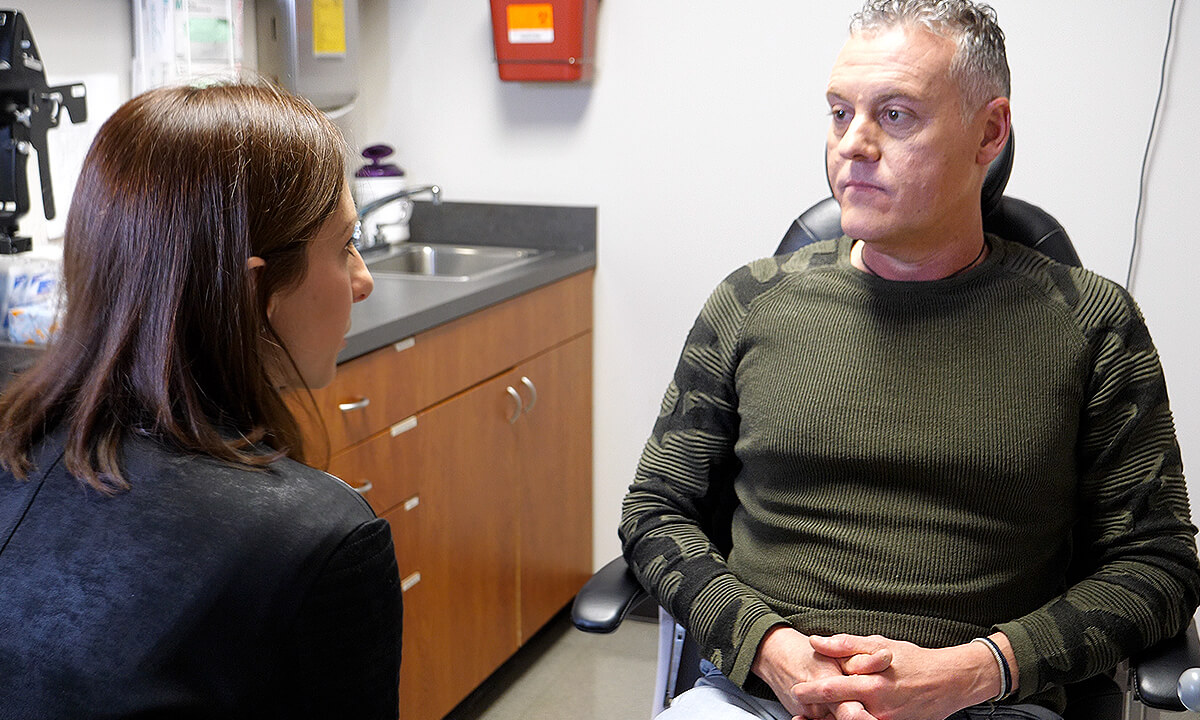About Choroidal Nevus
In the vascular layer of the eye, you can develop a collection of pigmented or non-pigmented cells called choroidal nevus. Nevus is essentially a medical word for a simple freckle or mole. The word "nevi" refers to multiple freckles. Usually, this condition is harmless, but it does need to be monitored for high-risk attributes. Once a nevus is identified, you should seek routine monitoring of the spot by an eye care professional. If the nevus has concerning features, such as significant thickness, you should see an ocular oncologist.The team at Retina Consultants of Texas has years of experience managing nevi. Each nevus is measured with great precision using advanced diagnostic tools so the best treatment plan can be created. You will want the best team on hand if your choroidal nevus develops into cancer. When you select Retina Consultants of Texas to manage your nevus, we will do our best to provide you with exceptional care and cutting-edge technologies. You will also have the benefit of having access to one of the largest retina and tumor research department in the country, which can be an invaluable resource.

Known Causes
Did you know that choroidal nevi are very common, especially in Caucasian patients? For every group of ten people, one person will have a choroidal nevus. Rarely, one of these nevi will develop into a cancer. It is important to have a nevus monitored by an eye care professional so that any growth will be detected immediately. Any nevi at high risk of transforming into a cancer should be examined by an ocular oncologist.
Diagnosis
We have the ability to characterize nevi in the office with many sophisticated diagnostic testing techniques, such as ultrasound, ophthalmic photos, ophthalmic fluorescein angiography (a testing with a special dye), and optical coherence topography (a magnified image of the retina)[1] (Medina et al. 2014) and optical coherence topography-angiography (a magnified image of the retinal blood vessels).
Treatment and Prognosis
Generally, choroidal nevi do not require treatment. They are observed over time in order to assess whether they are growing (and therefore acting biologically like a choroidal melanoma, malignant cancer). They are tracked with detailed imaging and tests such as ultrasound, photographs, and other forms of testing in order to measure them with great detail. Rarely a biopsy is used in order to determine how aggressive the cells in the tumor are multiplying.
Overall, only a small percentage do advance into malignant tumors. Historically, we have learned to identify what clinical features are found more commonly in nevi that do grow into melanomas.
Visualize Good Health
When presented with a choroidal nevus, we will take the treatment journey with you. We have an amazing team at Retina Consultants of Texas, ready for your first consultation in one of our Southeast Texas offices.
Learn More About Choroidal Nevus
- Medina CA, Plesec T, Singh AD. Optical coherence tomography imaging of ocular and periocular tumours. Br J Ophthalmol. 2014 Jul;98 Suppl 2(Suppl 2):ii40-6. https://pubmed.ncbi.nlm.nih.gov/24599420/

